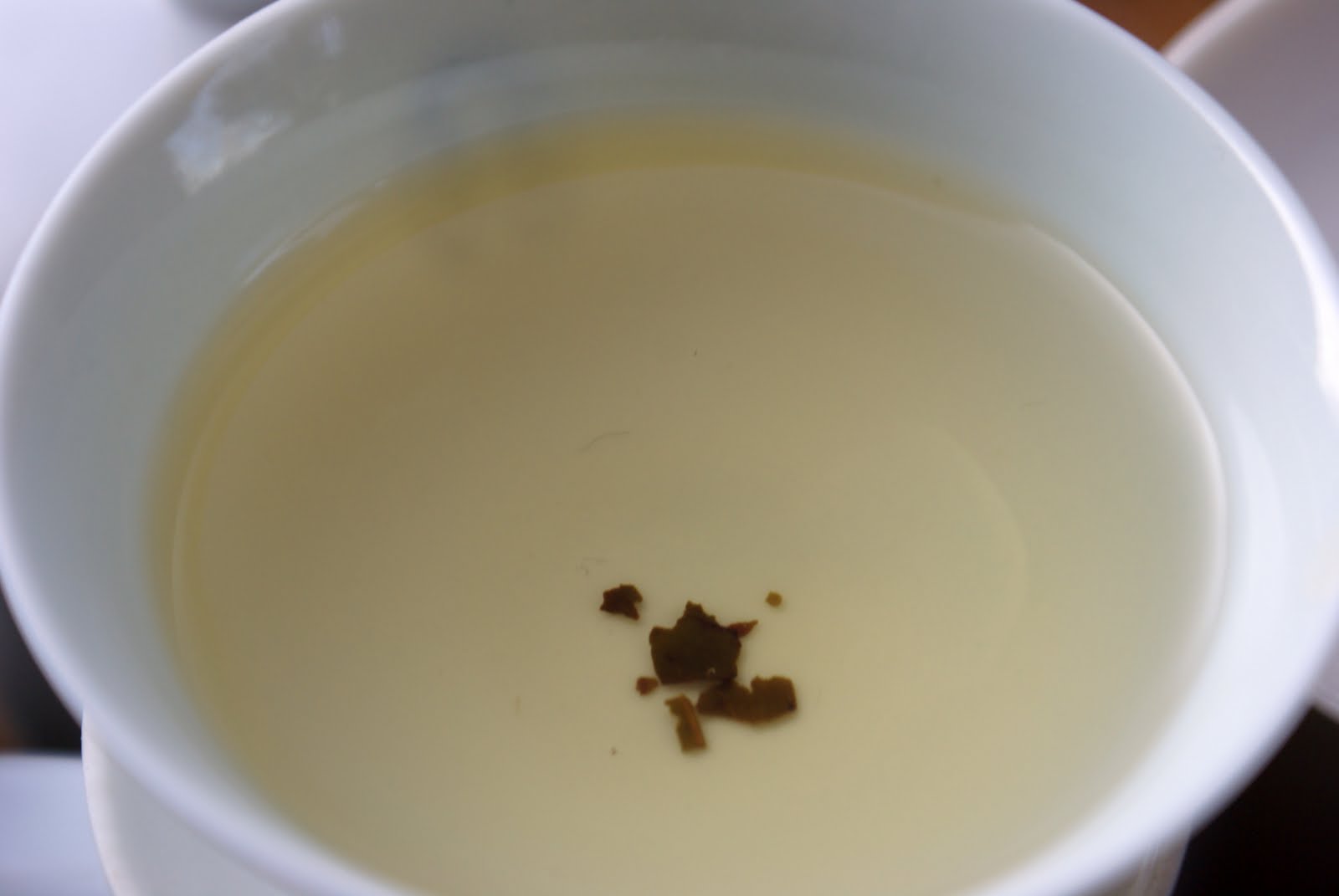2009 Darjeelings (5): Makaibari
Posted on 15 December 2009
The renowned tea estate of Makaibari is one of the few to my knowledge to operate biodynamic farming. There being little comparison I can’t really say what effect this has on the flavour of their teas, but it’s an interesting element anyway.
 I’ve tasted four Makaibari teas this season. The 1st flush 2009 Imperial Delight ($6 / 100g, sourced from Lochan Tea Ltd. as all four teas reviewed today) is a good grade with well-sorted small leaves and an intense herbes de Provence, bergamotty aroma; there’s a bit more deep brown to the leaf colour than seems to be the 1st flush norm these days. A medium deep coloured cup, this starts with a fair bit of oxidation in the aroma but delivers plenty of comfortable balanced fruitiness in mouth. It’s a rather solid and tannic first flush, a little heftier than I expect from this style but balanced and very good quality. Better than a competition brewing, I’ve liked a long infusion on little leaf in a large pot (3.5g/300ml): it remains a firm tea but there is a gentler almondy flavour on the finish that’s quite attractive.
I’ve tasted four Makaibari teas this season. The 1st flush 2009 Imperial Delight ($6 / 100g, sourced from Lochan Tea Ltd. as all four teas reviewed today) is a good grade with well-sorted small leaves and an intense herbes de Provence, bergamotty aroma; there’s a bit more deep brown to the leaf colour than seems to be the 1st flush norm these days. A medium deep coloured cup, this starts with a fair bit of oxidation in the aroma but delivers plenty of comfortable balanced fruitiness in mouth. It’s a rather solid and tannic first flush, a little heftier than I expect from this style but balanced and very good quality. Better than a competition brewing, I’ve liked a long infusion on little leaf in a large pot (3.5g/300ml): it remains a firm tea but there is a gentler almondy flavour on the finish that’s quite attractive.
 The 2009 Vintage Muscatel is from the 2nd flush ($6 / 100g); photo above). It’s not a very tippy tea, and shows more stem than I would really like. That being said, it’s nice. It share that untoasted almonds reminiscence with the above, and shows rather smooth and ungrippy for a 2nd flush. It’s also unfruity, centered around dried herbs and nuts; perhaps mildly autumnal in style. It’s another tea that’s benefitting from a lighter touch in brewing, to bring out the elegance and cleanliness and even a bit of sweet grapey muscatel character after 3–4 minutes of brewing. Good, though not really a special 2009.
The 2009 Vintage Muscatel is from the 2nd flush ($6 / 100g); photo above). It’s not a very tippy tea, and shows more stem than I would really like. That being said, it’s nice. It share that untoasted almonds reminiscence with the above, and shows rather smooth and ungrippy for a 2nd flush. It’s also unfruity, centered around dried herbs and nuts; perhaps mildly autumnal in style. It’s another tea that’s benefitting from a lighter touch in brewing, to bring out the elegance and cleanliness and even a bit of sweet grapey muscatel character after 3–4 minutes of brewing. Good, though not really a special 2009.
 And finally the 2009 Green Delight – I’ve tried both the first (photo above) and second flush version (both at $2 / 100g; there is no real difference between them). I must say I completely fail to understand this tea. Looking at the dry leaf it is fragmented and multicoloured and looks like a less oxidised version of black Darjeeling. Throughout a series of brewings in glass and porcelain, at various dosage from 1 to 4g/100ml, from 60C to 90C this tea is a major failure. It does indeed taste like an unsuccessful attempts at a less oxidised Darj. The colour is almost invariably deep orange and the flavour is coarse and bitter, with a citrus rind note the only recognisable aroma. I tried hard to brew it light but only got an pale insipid cup of warm water. Either I got it wrong or it’s just a stretched attempt at making green tea where one shouldn’t.
And finally the 2009 Green Delight – I’ve tried both the first (photo above) and second flush version (both at $2 / 100g; there is no real difference between them). I must say I completely fail to understand this tea. Looking at the dry leaf it is fragmented and multicoloured and looks like a less oxidised version of black Darjeeling. Throughout a series of brewings in glass and porcelain, at various dosage from 1 to 4g/100ml, from 60C to 90C this tea is a major failure. It does indeed taste like an unsuccessful attempts at a less oxidised Darj. The colour is almost invariably deep orange and the flavour is coarse and bitter, with a citrus rind note the only recognisable aroma. I tried hard to brew it light but only got an pale insipid cup of warm water. Either I got it wrong or it’s just a stretched attempt at making green tea where one shouldn’t.


